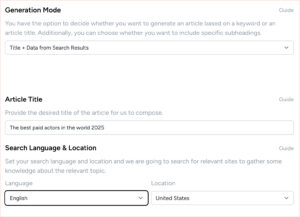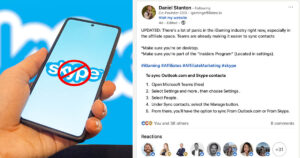In the beginning, the e-commerce industry was considered a niche business, but the industry has grown leaps and bounds with technology over the past 20 years. Look at the e-commerce giant, Amazon. They sell hundreds of items every second, and they have indeed set the bar high for e-commerce shops all over the world. Anything can be done online, and it’s no doubt e-commerce will continue to prosper.
But with all this growth comes competition – lots of it. More and more webshops are forced to “shut their doors” due to the fierce competitions from giants like Amazon and eBay. So how can you make sure your shop won’t face the same destiny? Read more to know how top quality content can help increase your revenue.
Sales and content go hand-in-hand
Thousands of shopping carts are left empty every day. One reason for this could be that the products are not desirable enough for customers. We know, your products are amazing, there’s a real need and you’re offering the solution. So how can you get the visitor to understand that and complete their purchase? Top quality content is the answer.
Too many businesses ignore the fact that content plays a huge role when selling products. The process of customers’ decision-making whether to purchase or not comes in while reading about the product. Because of it, good product information should be a priority, followed by price and delivery time.
3 objections to overcome when guiding the user through the buying process:
- Why should I buy this product?
This is where your product description goes to work. You need to nail this part for the user to proceed to the next step in their purchasing process. Think benefits for the user. - How much do I have to pay for it?
Price point is important too, but if you have created a need and desire in your product description, a higher price point is achievable without scaring away the customer. - How and when do I get it?
You’re almost there, delivery method and time. If you’ve done your job right, this is when the customer thinks: “I need it and I need it now”.
Some online business owners think that only attractive pictures and easy-to-navigate sites can attract purchases from potential customers. What is usually ignored is the fact that sales and content are linked together. Quality content can help a great deal in increasing sales. However, some e-commerce sites still lack high-quality content.
Take product descriptions that are poorly written as an example. Even if it gets a lot of purchases, it may cause a lot of returns. This lessens the credibility of the brand, and customers may lose confidence in purchasing from the business. This will result in a low number of repeat customers. In contrast, good content can increase sales and gain many repeat customers. Therefore, make sure that your product descriptions are setting the right expectations for the client. There’s no point of over-selling a subpar product, it will never create return business.
What’s the difference between high-quality content and low-quality content?
When writing a product description or a SEO category description, it should be attractive and enticing, encouraging the reader to make a purchase. One common mistake that businesses often make is simply describing the product rather than stating captivating reasons why potential customers should buy. Writing selling content for a product may seem complicated, but if you take a look at the tips below, it will all seem a bit more doable.
Good content is:
- Aimed at your target audience
- Reflecting your market’s needs and interests
- Recognises what makes the product different from others
- Describes benefits, not features (look at how Apple writes their texts for example)
- Makes it easy to understand
- Keeps it relevant
We have also included a list of some factors that result in bad content.
Bad content is:
- Ignoring all the previously mentioned tips
- Forgetting to explain the link between the product and its benefits to customers
- Not announcing special offers
- Not defining the tone of voice and other aspects related to it
Defining top quality content
Customers tend to get attracted to products with great quality descriptions. This lets them imagine how the product would affect them, and this information is retained into their heads. Content with high quality would be meeting all the criteria above with additional good aspects. These aspects include easy-to-read sentences that provide short bursts of information, verb usage that will create a feeling of movement and the use of sensory adjectives. All of these will persuade the customer to purchase.
In addition to that, how you lay out the content matters. A large and good font, subheadings and bullet points are some features that will help in catching the attention of site visitors. Information presented in this way will stick to the minds of potential customers. Moreover, content with high quality should also have suggestions and reviews. You have to prove to site visitors that you are trustworthy. After all, this is an important factor for all customers.
Important points of content with high quality
- Use subheadings
- Short sentences and paragraphs
- Use fewer adjectives than verbs
- Include bullet points
- Add suggestions and reviews
“Great content is the best sales tool in the world.”
– Marcus Sheridan
Understand who your audience is
Being relatable is significant, and that is the reason why you have to know who your audience is. It is easy explaining to your customers the value of the service or the product, but you should go the extra mile. Customers like to hear what the product can do for them, so you should put that in writing. This shows that you are serious in helping your potential customers by giving them results that are specific. Moreover, putting numbers, infographics, and other ways to present your information will impress your site visitors.
Top quality content from Topcontent
If you need help writing high-quality content for your business, Topcontent is always ready to help. Fill in your details in the form below and we’ll get in contact with you, or see how we can help you with product descriptions and category descriptions.






